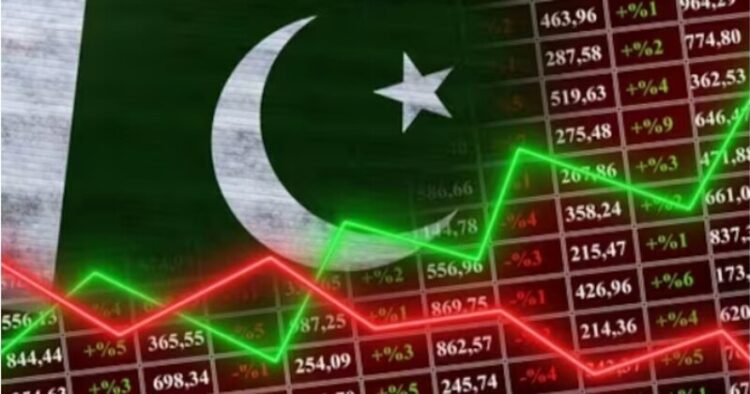The International Monetary Fund (IMF) agreed to give $1.1 billion to Pakistan some days ago. This would be the last tranche of a $3 billion bailout package signed in June 2023 when Pakistan was on the verge of sovereign default. That last bailout deal was the 23rd time Pakistan had resorted to borrowing from the IMF since 1958.
Even before the review of 23rd borrowings was over, Pakistan officials told the IMF team their country wanted another bailout. That means talks, or negotiations with the IMF, for the next round of loans will have to start soon. Incidentally, this IMF money is what has been keeping the Pakistani economy going for as long as one can remember.
For good measure, Pakistani officials have been telling journalists, of course, off the record, that they want at least $6 to $6.5 billion. This bigger and better loan package should be for three to four years, as the word has spread. Praising officials on Wednesday, Pakistan Prime Minister Shehbaz Sharif said they did a wonderful job in parleys with the IMF. Sharif also hoped the officials would now focus on the next round of borrowings.
The debt trap has truly set in, and it has a vice-like grip on the economy now, according to most financial experts. This gets illustrated by the fact that while Pakistan will get a $1.1 billion IMF loan next month, it has to make a payment of $1 billion due to maturing Euro bonds around the same time. In the financial year 2025 (July 2024 to June 2025), Pakistan has to repay an external debt of $25 billion.
Reckless borrowings are all time favourites of all rulers, be they civilians or those in uniform, for running the country’s economy. The civilians referred to in here are those like Benazir Bhutto, Nawaz Sharif, and Imran Khan. Those in uniform who have ruled Pakistan include the likes of General Ayub Khan, Zia ul Haq, and Pervez Musharraf. The civilians and military rulers may not agree on many things, but on IMF borrowings, there is absolute unanimity.
Nations usually approach the IMF as a “lender of last resort’’ once their belt tightening at home fails. Bharat had also gone to IMF 33 years ago, in 1991, but it put economic reforms in place thereafter. IMF loans have not been considered an option ever since. Instead, offering a conducive ecosystem for attracting Foreign Direct Investments (FDIs) has kept its march towards a $5 trillion economy on course.
It appears the only way Pakistan knows is to borrow left, borrow right, and borrow centre, with no thought of returning the money ever. Studying the history of its borrowings for IMF and what it calls friendly countries reveals a fascinating fixation for freebies and loans. The first IMF loan it took was in 1958, and then seven years later, in 1965. After attacking Bharat and getting a bloody nose, Pakistan went to IMF saying war had harmed its economy!
Three years later, in 1968, it was back with the IMF, and then in 1972, again in 1973, and 1974. After a brief hiatus of three years, it took IMF loans in 1977, 1980, and then 1981. During Benazir Bhutto’s reign in 1988, the IMF was again tapped. In 1990, however, Nawaz Sharif as PM, acted differently, he decided that Pakistan was better off begging and bagging donations from sympathetic nations like Saudi Arabia! Rather than going to IMF.
In 1993, Benazir was back in power, and the IMF was her choice to shore up a tanking economy. In the following years, in 1994 and 1995, more IMF loans were taken. In 1997, Nawaz Sharif changed tactics and went to the IMF for the first time. An interlude of three years, the country was spreading its hands before IMF in 2000 again.
In 2008, as well as in 2013, it was IMF loans that sustained Pakistan, but things changed a bit in 2018 after Imran Khan became PM. Instead of going to the IMF, he chose to take money from Saudi Arabia, UAE and China.
Remember Imran with all courtesy and humility personified when he drove Saudi Prince Mohammad bin Sultan aka MBS during the latter’s visit to Pakistan? However, in 2019, Pakistan had no choice but to approach IMF again, for the 22nd time.
Pakistan has a very steady (unenviable though) record of at least 66 years since 1958 of taking foreign debts and spending this money on luxury items. As such, it has hardly ever generated foreign revenue in excess of its debts. For the past couple of decades, it has taken loans to repay past loans and debts. It has reached a stage where salaries are paid to government employees by printing more Pakistani currency and using debt!
The other day, Prime Minister Narendra Modi was clearly alluding to our western neighbour when he said the world is watching the consequences faced by those who instigate terror attacks against Bharat.
.



















Comments